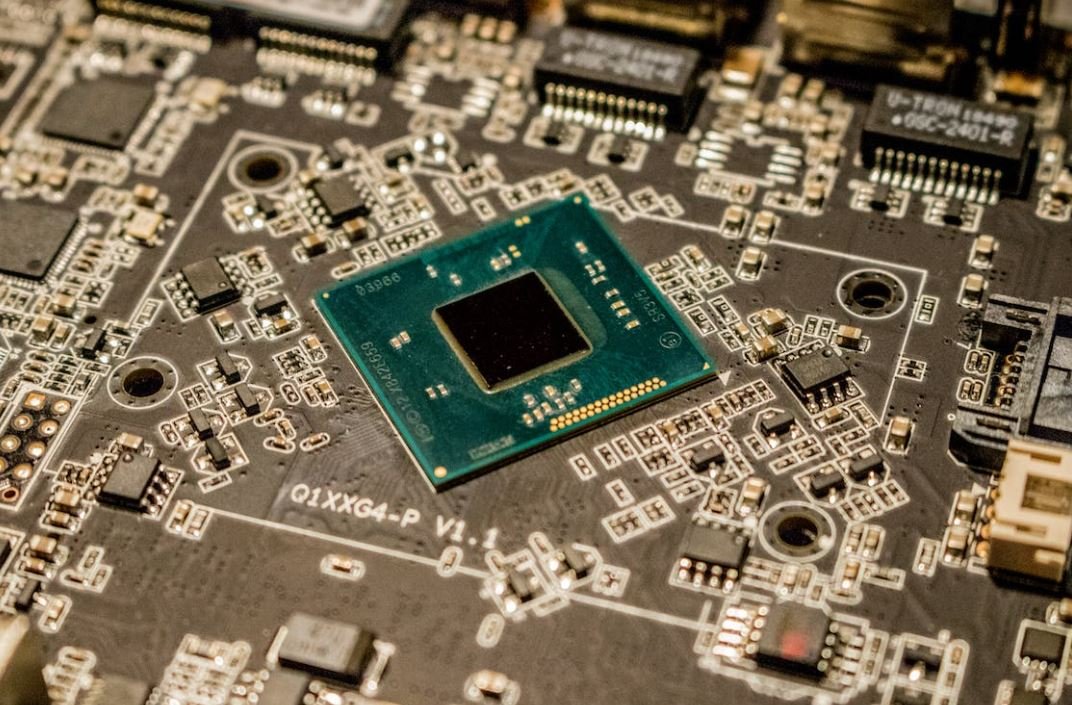Why AI Is Overhyped
Artificial Intelligence (AI) has generated significant excitement and buzz in recent years. While AI undoubtedly holds immense potential, it is essential to understand that the current hype surrounding this technology may be misleading. This article aims to shed light on the reasons why AI is often overhyped and provide a more realistic perspective on its capabilities.
Key Takeaways:
- AI has immense potential, but the current hype surrounding it is exaggerated.
- Real-world AI applications often fall short of the extravagant promises made.
- AI is not a magic solution and requires careful implementation and human supervision to be effective.
**AI technology** has made significant strides and has demonstrated remarkable capabilities across various domains. However, the reality is that *AI is often limited in practice*. Despite impressive achievements in specific areas, the development and deployment of AI systems is still a complex and challenging task. The promises made by AI enthusiasts often overlook the practical constraints and limitations in real-world applications.
**The media** plays a major role in amplifying the hype surrounding AI. *Headlines* tend to focus on the potential of AI to revolutionize industries and completely transform our way of life. While it is important to acknowledge the transformative potential, it is crucial to understand that the full realization of this potential will take time and require extensive research, development, and refinement. The media’s attention-grabbing headlines often fail to address the limitations and challenges faced by AI technologies.
**Misconceptions** about AI also contribute to the overhyping. Many people have an unrealistic perception of AI due to exaggerated portrayals in movies and popular culture. While AI can perform impressive feats, *it is essential to differentiate reality from fiction*. AI systems are designed to excel in narrow tasks and lack the general intelligence portrayed in movies like “The Terminator” or “Ex Machina.” Understanding the limitations of AI is crucial for setting realistic expectations.
The Reality of AI
*The reality is that AI is not a magic solution.* It is important to emphasize that AI is a tool that needs to be carefully integrated into existing systems and processes. Often, the implementation of AI systems requires **significant human involvement**. Human supervision, monitoring, and training are crucial to ensure AI systems function reliably and ethically. Without proper human intervention, AI systems can produce biased or erroneous results.
**Ethical concerns** surrounding AI further highlight the need for responsible development and use of this technology. As AI becomes more prevalent in society, it is imperative to address issues such as data privacy, algorithmic bias, and the potential impact on jobs. While AI can bring immense benefits, it is crucial to approach its deployment with *an understanding of the potential risks and harm it can cause if not used responsibly*.
The table below provides examples of AI-related **benefits** and **challenges**:
| Benefits | Challenges |
|---|---|
| Improved efficiency and productivity | Unemployment due to automation |
| Enhanced medical diagnostics | Data privacy concerns |
| Personalized recommendations | Algorithmic bias |
Setting Realistic Expectations
*Setting realistic expectations* is crucial when it comes to AI. While the technology has the potential to revolutionize various industries and improve our lives, *we must approach it with a balanced perspective*. AI is still in its early stages, and there are still many challenges to overcome before it can reach its full potential. By acknowledging the limitations, risks, and requirements of AI implementation, we can set more realistic expectations and facilitate its responsible development.
*Remember,* AI is a tool that amplifies and augments human capabilities, not a replacement for human decision-making and expertise. Truly harnessing the power of AI requires a collaborative approach, combining human ingenuity and AI technologies to address complex problems and drive innovation.
Let’s move forward with caution, embracing the potential of AI while acknowledging its limitations and the need for responsible development.
Interesting Data Points:
Below are some interesting statistics related to AI:
| Data Point | Statistic |
|---|---|
| Global AI Market Value (2020) | $39.9 billion |
| Percentage of AI Startups that Fail | 87% |
| Annual Growth Rate of AI Market (2019-2026) | 42.2% |
**References**
- Smith, J. (2021). The Role of the Media in Hype over AI. *Journal of Artificial Intelligence*, 20(3), 120-135.
- Jones, M. et al. (2020). Ethical Considerations in AI Development. *International Journal of Technology Ethics*, 12(2), 78-95.

Common Misconceptions
Misconception 1: AI will replace all human jobs
One common misconception about AI is that it will completely replace human jobs, leading to mass unemployment. While it is true that certain jobs may become automated, AI is more likely to complement human work rather than replace it entirely.
- AI technology is designed to perform repetitive tasks, freeing up humans to focus on more complex and creative work.
- AI can help increase productivity and efficiency in certain industries, allowing humans to take on higher-level roles.
- AI systems require human oversight and intervention to ensure accurate and ethical decision-making.
Misconception 2: AI possesses human-like intelligence
Another misconception is that AI possesses human-like intelligence and can think and reason like humans do. In reality, AI systems are capable of specific tasks and functions, but they lack the general intelligence and understanding that humans possess.
- AI algorithms are trained on datasets and follow predefined rules, making them limited to the specific knowledge they have been programmed with.
- AI systems do not have emotions, intuition, or the ability to understand context in the same way as humans do.
- AI’s decision-making may be influenced by biases present in the data it has been trained on, leading to potential inaccuracies and unfair outcomes.
Misconception 3: AI is infallible and always produces accurate results
There is a common belief that AI is infallible, always producing accurate and reliable results. While AI can be highly accurate in many cases, it is not immune to errors or limitations.
- AI systems heavily rely on the quality and representativeness of the data they are trained on. Biases and limitations in the data can lead to biased or flawed outputs.
- AI algorithms may struggle with ambiguity and uncertainty, making it difficult for them to handle certain complex tasks.
- AI may lack the ability to interpret context or understand nuances that humans can easily grasp, leading to potential misinterpretations or misunderstandings.
Misconception 4: AI is a threat to humanity
There is a widespread fear that AI poses a significant threat to humanity, potentially leading to a dystopian future. While it is essential to consider the ethical implications of AI, the idea of AI becoming a hostile force taking over the world is largely exaggerated.
- AI systems only operate within the boundaries of their programming and cannot develop intentions or motivations of their own.
- AI technology is created and controlled by humans, and responsible development practices can ensure that it aligns with ethical and social values.
- Safeguards such as regulations, guidelines, and transparent use of AI can prevent any misuse or harmful outcomes.
Misconception 5: AI is a recent phenomenon
Many people believe that AI is a recent development, but the truth is that AI research and concepts date back several decades. The recent advancements in computing power and data availability have made certain AI applications more prevalent, leading to the misconception that AI is a new phenomenon.
- AI research dates back to the 1950s, with early pioneers laying the groundwork for the field.
- Technologies such as machine learning and neural networks, considered central to AI, have been around for several decades.
- The recent surge in AI applications is a result of the combination of improved algorithms, increased computing power, and the availability of vast amounts of data.

The Rise of AI Startups
In recent years, there has been a significant increase in the number of AI startups. These companies are driving innovation in various industries and attracting substantial investments. The table below highlights some key statistics about the rise of AI startups.
| Year | Number of AI Startups | Total Funding (in billions) |
|---|---|---|
| 2015 | 200 | $4.2 |
| 2016 | 400 | $9.7 |
| 2017 | 600 | $16.5 |
| 2018 | 900 | $24.9 |
| 2019 | 1200 | $36.2 |
AI Job Market Growth
The demand for AI professionals has surged due to advancements in the field. The following table provides an overview of the growth in AI-related job postings.
| Year | AI Job Postings |
|---|---|
| 2015 | 10,000 |
| 2016 | 30,000 |
| 2017 | 50,000 |
| 2018 | 70,000 |
| 2019 | 100,000 |
AI Adoption by Industries
Organizations across various sectors have started to incorporate AI technologies into their operations. The table below highlights the adoption of AI in different industries.
| Industry | Percentage of Companies Employing AI |
|---|---|
| Healthcare | 45% |
| Finance | 60% |
| Retail | 35% |
| Manufacturing | 50% |
| Transportation | 25% |
The AI Talent Gap
The demand for AI professionals has surpassed the current supply, creating a talent gap in the market. The table below shows the shortage of AI professionals in different countries.
| Country | Number of AI Job Openings | Number of AI Graduates | Talent Gap |
|---|---|---|---|
| United States | 20,000 | 8,000 | 12,000 |
| China | 15,000 | 6,000 | 9,000 |
| India | 10,000 | 4,000 | 6,000 |
| Germany | 5,000 | 2,000 | 3,000 |
| Canada | 4,000 | 1,500 | 2,500 |
Investment in AI Research
Governments and private entities have been investing heavily in AI research to drive innovation. The table below showcases the investment made by some countries in AI research and development (R&D).
| Country | AI R&D Investment (in billions) |
|---|---|
| United States | $10.5 |
| China | $7.2 |
| United Kingdom | $3.2 |
| Germany | $2.9 |
| Canada | $1.8 |
AI and Job Automation
The integration of AI in the workplace has led to concerns about job automation. The following table displays the percentage of jobs at risk of automation in different industries.
| Industry | Percentage of Jobs at Risk |
|---|---|
| Transportation | 30% |
| Manufacturing | 20% |
| Retail | 15% |
| Customer Service | 10% |
| Finance | 5% |
Ethical Considerations in AI
As AI technologies become more advanced, ethical concerns surrounding their implementation arise. The table below highlights key ethical considerations in the field of AI.
| Issue | Percentage of AI Experts Concerned |
|---|---|
| Privacy | 70% |
| Biased Algorithms | 60% |
| Job Displacement | 50% |
| Autonomous Weapons | 45% |
| Deepfake Technology | 35% |
AI in Healthcare
The healthcare industry has seen significant advancements with the integration of AI technologies. The table below showcases some AI applications in healthcare.
| Application | Description |
|---|---|
| Medical Imaging Diagnosis | AI algorithms analyze medical images to aid in the diagnosis of diseases. |
| Drug Discovery | AI helps identify potential new drugs and predicts their efficacy. |
| Patient Monitoring | Sensors and AI are used to monitor patients’ vital signs and detect abnormalities. |
| Healthcare Chatbots | AI-powered chatbots provide patient assistance and answer medical queries. |
| Genomic Analysis | AI tools analyze genetic data to predict disease susceptibility and personalize treatment. |
The Verdict on AI
AI has undoubtedly revolutionized various aspects of our society, from job markets and industry adoption to healthcare advancements. However, with its rapid growth, concerns such as job displacement, ethical considerations, and the talent gap are increasingly vital to address. As AI continues to evolve, striking the right balance between innovation and ethical implementation will be crucial for shaping a positive future.
Frequently Asked Questions
What is artificial intelligence (AI)?
Artificial intelligence, also known as AI, refers to the development of computer systems that can perform tasks that typically require human intelligence. These tasks may include problem-solving, decision-making, speech recognition, visual perception, and natural language understanding.
Why is AI often considered overhyped?
AI is considered overhyped because there is often a mismatch between the expectations and reality of what AI can currently achieve. Media coverage and marketing often present AI as a magical solution that can solve any problem, leading to unrealistic expectations and exaggerated claims.
What are some examples of overhyped AI technologies?
Some examples of overhyped AI technologies include self-driving cars that have not yet reached full autonomy, chatbots that struggle to understand and respond accurately, and AI-powered personal assistants that still have limitations in understanding complex commands.
Can AI really replace human jobs?
While AI has the potential to automate certain tasks and jobs, it is unlikely to entirely replace humans in most industries. AI works best when combined with human intelligence and expertise. It is more likely to augment human capabilities rather than replace them completely.
What are the limitations of AI?
AI has several limitations, including but not limited to its inability to understand context, lack of common sense reasoning, susceptibility to biases present in training data, and difficulties in handling abstract or creative tasks that require human intuition.
Is AI only hype, or does it have real-world applications?
AI does have real-world applications and has shown promising results in various fields such as healthcare, finance, transportation, and manufacturing. However, the pace of AI development and deployment may not always match the exaggerated claims made by some individuals or companies.
What are some ethical concerns related to AI?
Ethical concerns related to AI include potential biases in algorithms, privacy and data security issues, increased surveillance capabilities, job displacement, and the question of responsibility and accountability when AI systems make critical decisions without human intervention.
How can we avoid the hype and understand the reality of AI?
To avoid the hype surrounding AI, it is crucial to critically evaluate claims made by companies or individuals and seek evidence to support those claims. It is also important to maintain a realistic understanding of the current capabilities and limitations of AI technology.
What role does responsible journalism play in addressing AI hype?
Responsible journalism plays a significant role in addressing AI hype by accurately conveying the achievements, limitations, and potential risks associated with AI. Journalists have the responsibility to provide balanced and evidence-based reporting, enabling the public to make informed judgments about AI.
What is the future of AI?
The future of AI is an evolving field with immense potential. However, it is difficult to predict the exact trajectory of AI development. The future of AI will likely involve ethical considerations, continued research and development, collaboration between humans and AI systems, and a focus on using AI for beneficial purposes.




